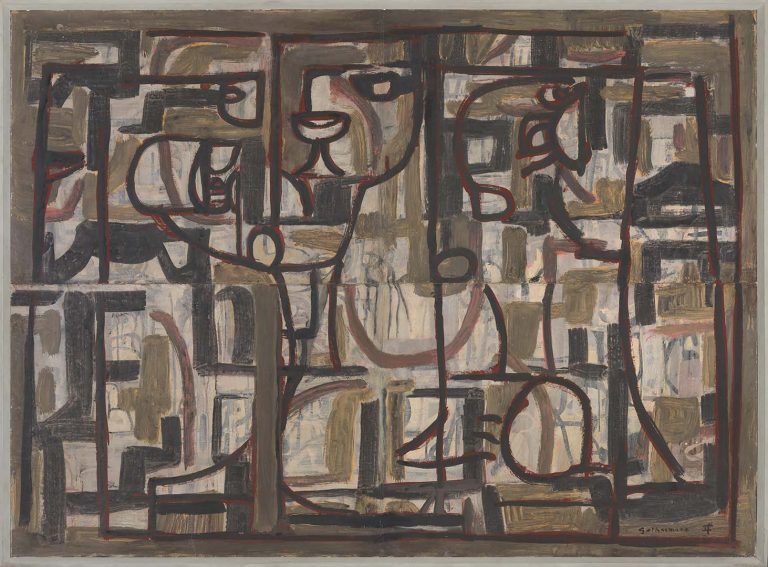We acknowledge the Traditional Owners of the land on which the Queensland Art Gallery | Gallery of Modern Art stands and recognise the creative contribution First Australians make to the art and culture of this country.

Ian Fairweather / Scotland/Australia 1891–1974 / Gethsemane 1958 / Gouache on cardboard on board / 145.5 x 198cm / Gift of Philip Bacon AM through the Queensland Art Gallery | Gallery of Modern Art Foundation 2017. Donated through the Australian Government’s Cultural Gifts Program / Collection: Queensland Art Gallery / © Ian Fairweather/DACS. Licensed by Viscopy
Ian FairweatherGethsemane 1958
On Display: QAG, Gallery 11
Gethsemane 1958 depicts Christ in the Garden of Gethsemane the night before his crucifixion. Fairweather’s biblical images were not intended to emphasise a particular religious message by the artist, but to convey an aesthetic experience of the subject and the event.
Gethsemane evokes the great European tradition of religious painting. Strongly influenced by Cubism and Chinese calligraphy, it is one of the most powerful of his religious paintings.
Gethsemane was selected for the Blake Prize in 1959. In 1961 it was acquired by Nobel Prize-winning Australian author Patrick White who donated it to the Art Gallery of New South Wales in 1974.
The painting hung above White’s writing desk, and the author looked up to Fairweather for his commitment to his art. White’s novel The Vivisector 1970, about a reclusive artist, borrows aspects of Fairweather for its main character.
Ian Fairweather was born in Scotland in 1891. His father encouraged him to join the British Army and, in June 1914, just two months after he was commissioned, Fairweather was captured by the German Army and sent to a prison camp. There, he studied Japanese, sketched, and illustrated the prisoners’ magazine. After the war, he studied at the Slade School of Fine Art, London.
Leaving England in 1927, Fairweather travelled continually for nearly two decades, journeying to Canada, China, Indonesia, South America, the Philippines, Japan and Australia. In 1952, he attempted to cross the sea from Darwin to Timor on a raft, which turned into a perilous, 16-day solo journey that ended in Roti, Indonesia, from where he was deported to England.
When he returned to Australia in 1953, Fairweather retreated from society. He built a rudimentary hut on Bribie Island, north of Brisbane, and went on to produce his greatest works there until his death in 1974.